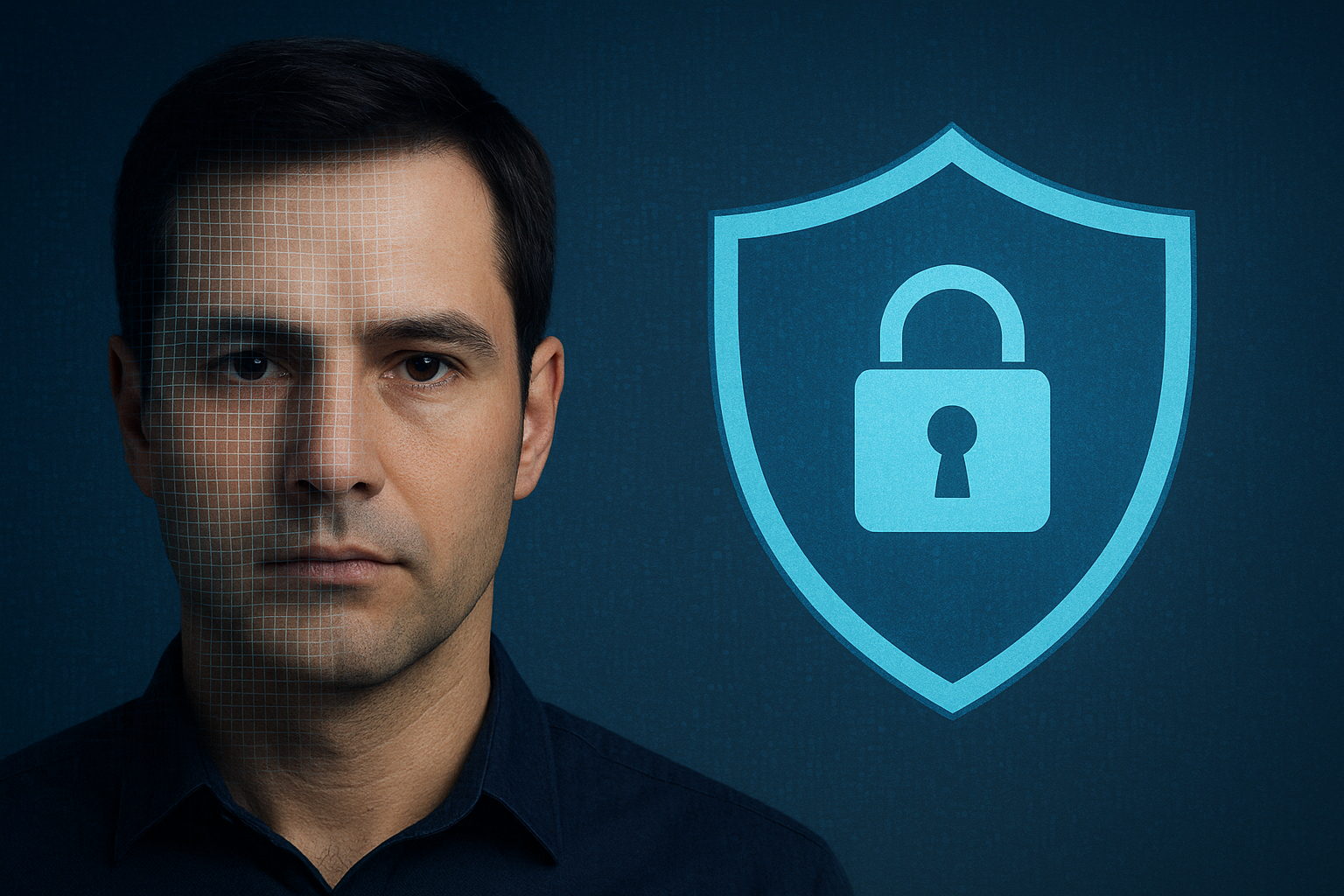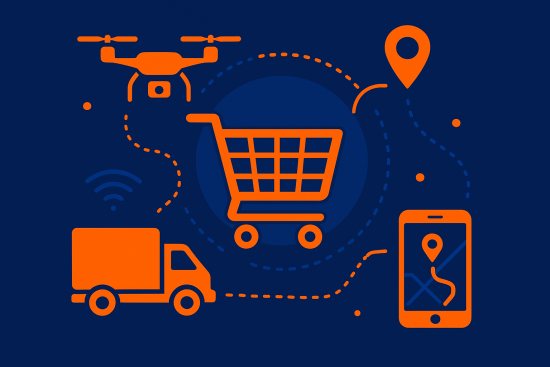
Introduction
In today's digital age, artificial intelligence (AI) has opened the door to new cyber threats, and one of the most dangerous is deepfake. These attacks use advanced AI technologies to create extremely realistic fake content, such as videos, audios and images, with the aim of deceiving people and organizations.
Deepfakes can be used to impersonate and deceive employees or customers, creating serious security risks for your organization. In this article, we will explore how to detect and prevent deepfake attacks, how they affect your business and what measures to take to protect your digital infrastructure.
Table of Contents
What are deepfakes?
Definition: A deepfake is a video, audio or image digitally manipulated using AI to create fake content. This technology can make a person appear to say or do something that never happened.
How they work: Deepfakes are created using generative adversarial neural networks (GANs), which allow the creation of very realistic representations that are difficult to distinguish from authentic content.
Example: An attacker can use a fake video of a company executive ordering a money transfer to scam you, making the attack look legitimate and convincing.
How to detect a deepfake?
Source verification: The first thing you should do is verify the source of the content. If a video or audio comes from an untrusted or unknown source, it is more likely to be a deepfake.
Technical analysis: Deepfakes often have small anomalies that can be difficult to detect with the naked eye, such as unusual blinking, inconsistent facial movements, or errors in audios that do not match the person's normal behavior.
Detection tools: There are advanced tools that use AI to detect deepfakes in videos and audios, such as Deepware Scanner or Microsoft Video Authenticator.
Example: If you receive a video from your boss asking for urgent action, use a video verification tool to make sure it's not a deepfake.
Personalized phishing through deepfakes
What is phishing with deepfakes: Attackers can use deepfakes to create fake emails, voicemails or videos of company executives, tricking employees into performing actions such as transferring money, handing over confidential information or clicking on malicious links.
Risks: The ability to create extremely personalized phishing messages using deepfakes makes it more difficult for employees to identify the hoax. This can have very serious financial and security consequences.
Example: A fake video of a CEO urgently requesting a transfer of funds to a different bank account could cause the employee to act without thinking, resulting in a significant loss.
Defense strategies against deepfakes
Training and awareness: Educating employees about the risks of deepfakes and how to recognize them is one of the first steps in preventing attacks. It is crucial that they understand that they should not blindly trust videos, audios or emails, even if they appear to come from trusted sources.
Implementation of security tools: Use advanced security software that offers deepfake detection, authenticity verification and behavioral analysis to filter suspicious content.
Process verification: Establishing verification protocols when receiving sensitive requests, such as verbal confirmation of money transfer requests, can reduce the risk of falling prey to a deepfake attack.
Example: If a manager requests a money transfer, be sure to verify it through another channel, such as a direct phone call, rather than relying solely on a video or email message.
How to protect your digital infrastructure from deepfakes
Constant monitoring: Implement security monitoring tools that alert you to counterfeit or manipulated content that could affect your network or systems.
Multifactor authentication: Multi-factor authentication (MFA) is crucial for protecting user accounts, especially when attackers may attempt to use deepfakes to trick employees and gain unauthorized access to sensitive systems.
Example: If an employee receives a message from a purported manager requesting sensitive information, implementing MFA can prevent the attacker from accessing the system even if the deepfake is convincing.
Protect your business from attacks with deepfakes:
As mentioned, deepfakes are not the only digital threat you should be aware of. The attacks of phishing Customized attacks, in which attackers impersonate trusted sources, are equally dangerous. These attacks are becoming more sophisticated thanks to emerging technologies, such as deepfakes.
To learn the best practices and strategies to avoid phishing in your businesswe invite you to read our article on how to avoid phishing in your businesswhere we offer recommendations on how to protect your employees and customers from these attacks.
General Examples of Deepfakes in the World.
1. Deepfake of a CEO causing fraudulent transfer
A famous case occurred when a CEO of a company in the United Kingdom was spoofed by a deepfake in a video. In this incident, an attacker used deepfake technology to create a convincing video of the company's CEO requesting an urgent money transfer for an international deal. The employee, fooled by the video, made the transfer, which resulted in the loss of a significant amount of money. This type of attack is known as Business Email Compromise (BEC)and is a clear example of how deepfakes can be used to manipulate important business decisions.
Lesson: Verify financial requests, even if they appear to come from legitimate sources, through alternative channels, such as a phone call or direct email.
2. Manipulation of political videos: The age of fake news
In 2018, a deepfake of Barack Obama was published in a video, created by the director of the advertising agency "Buzzfeed" in conjunction with AI company "DeepMind". In this video, Obama apparently said things he had never said, and although it was an awareness project, the example made it clear how easy it is to manipulate images and videos to create disinformation.
This example was used to show how deepfakes could be used to influence public opinion or manipulate elections, as occurred in several global political contexts. While this case was a controlled simulation, it also served to alert about the risks of deepfakes in the political arena.
Lesson: Verification of sources is essential, especially in the context of news and political statements.
3. Case of a fake video of an Iranian politician.
In 2019, a deepfake of a Iranian politician was used to manipulate his image and associate him with derogatory and false comments. This video caused a huge stir, as it was quickly distributed on social networks and media outlets. The ability to create this type of content and disseminate it on a large scale allowed the attackers to spread disinformation with a significant impact on Iran's domestic politics.
This incident is an example of how deepfakes can be used to create political chaos, spread fake news or incite social conflict.
Lesson: Education on the identification of deepfakes is crucial to prevent the spread of misinformation on social networks.
4. Deepfake in the entertainment industry: An example of positive impact.
Not all deepfakes are malicious. In the film industry, deepfakes have also been used for creative purposes. A famous example is the use of deepfake technology to recreate deceased actors, such as in the case of Carrie Fisher in "Star Wars: Rogue One".. Despite the ethical controversies, this technology has allowed filmmakers to revive characters, something that, in creative terms, has opened up new possibilities for the industry.
However, although this technology has been used ethically in some cases, it also presents risks, such as the unauthorized exploitation of the image of deceased persons for commercial purposes.
Lesson: Although the use of deepfakes in film may be innovative, it is essential to take into account ethical issues and the image rights of individuals.
5. Deepfakes in misleading advertising
In some cases, the deepfakes have been used to manipulate advertising in a misleading way. For example, in 2020, a video of a famous influencer was manipulated to promote fake products without their consent. These deepfakes generated misinformation about products and led to confusion among followers.
In this type of attacks, deepfakes are used to impersonating the voice or image of a celebrity and create ads that not only affect the reputation of the person in question, but can also damage trust in the associated brands and products.
Lesson: Brands should be aware of the risks of deepfakes and ensure that influencers and celebrities are not impersonated to promote fraudulent products.
Want to protect your organization against deepfake attacks and other digital threats? ClickPanda offers advanced cybersecurity solutions to prevent and mitigate risks associated with AI-driven attacks. Ensure the integrity of your digital infrastructure.
Conclusion:
Deepfakes are an emerging threat that is increasingly being used by attackers to manipulate people and businesses. As generative AI advances, the ability to create realistic counterfeit content is also increasing, making digital security more important than ever. Implementing defense strategies, verification tools and training your employees are key steps to protecting your business. Stay alert and prepared to face this new wave of digital threats.








